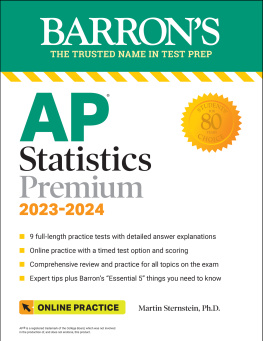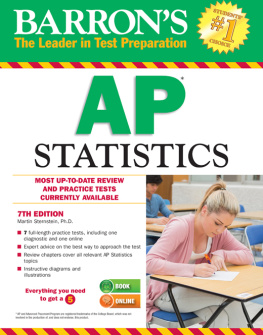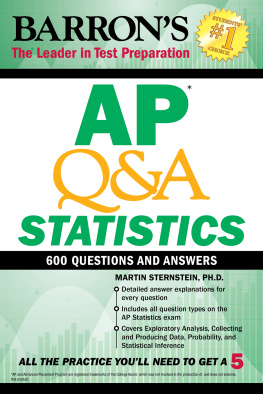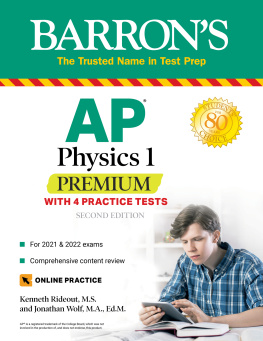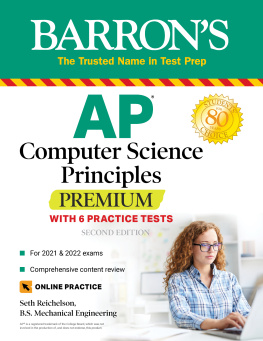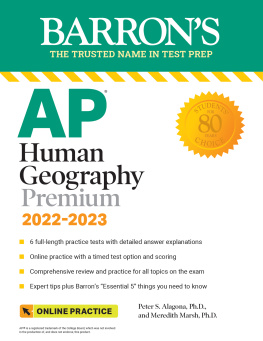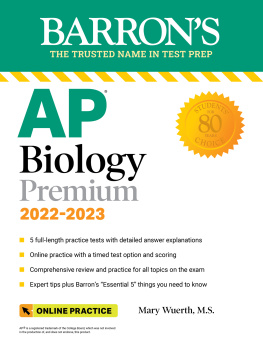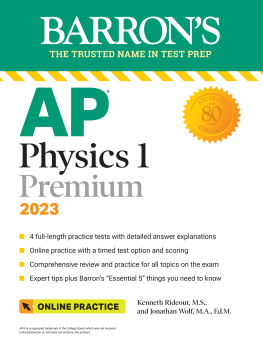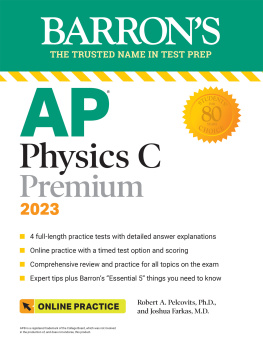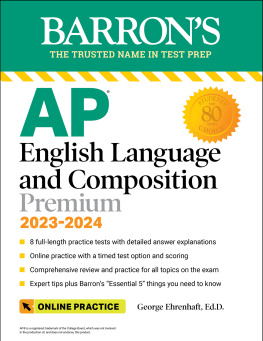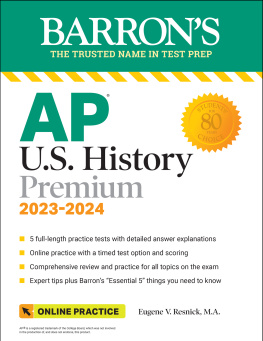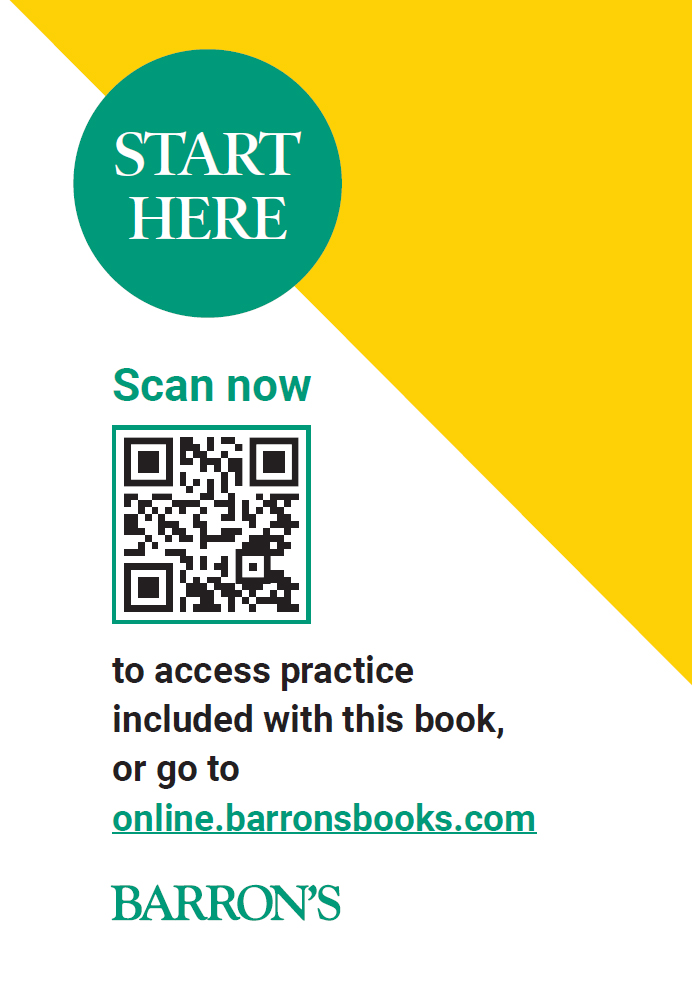
AP
Statistics
Premium
20232024
Martin Sternstein, Ph.D.
AP is a registered trademark of the College Board, which was not involved in the production of, and does not endorse, this product.
Acknowledgments
Thanks to Samantha Karasik, editor at Kaplan, for her guidance. Dawn Dentato and Paul Buckley have been of immense editorial help with proofreading this edition, and for that I am extremely grateful. Thanks to my brother, Allan, my sister-in-law, Marilyn, my sons, Jonathan and Jeremy, my daughters-in-law, Asia and Cheryl, and my grandchildren, Jaiden, Jordan, Josiah, Luna, Jayme, and Layla, for their heartfelt love and support. Most of all, thanks are due to my wife, Faith, whose love, warm encouragement, and always calm and optimistic perspective on life provide a home environment in which deadlines can be met and goals easily achieved. My sincere appreciation goes to the participants who have attended my AP Statistics workshops for teaching me just as much as I have taught them, and special thanks for their many useful suggestions are due to the following exceptional teachers:
David Bock
Paul Buckley
Dawn Dentato
Jared Derksen
Sarah Johnson
Lee Kucera
Laura Marshall
Brendan Murphy
Leigh Nataro
Kenn Pendleton
Adam Riazi
Penny Smeltzer
Daren Starnes
Josh Tabor
Jane Viau
Dawn White
Luke Wilcox
Dash Young-Saver | Ithaca High School, Ithaca, NY (retired)
Gonzaga College High School, Washington, DC
Somers High School, Lincolndale, NY (retired)
Rancho Cucamonga High School, Rancho Cucamonga, CA
Grand Blanc High School, Grand Blanc, MI
University of California, Irvine, CA
Phillips Exeter Academy, Exeter, NH
John Bapst Memorial High School, Bangor, ME
Moravian College, Bethlehem, PA
Montgomery College, Germantown, MD
Cabell Midland High School, Ona, WV
Austin Peace Academy, Austin, TX
The Lawrenceville School, Lawrenceville, NJ
Canyon del Oro High School, Oro Valley, Arizona
Frederick Douglass Academy, New York, NY
Silver Lake Regional High School, Kingston, MA
East Kentwood High School, Kentwood, MI
KIPP University Prep High School, San Antonio, TX |
Martin Sternstein
Ithaca College
Spring 2022 |
Copyright 2022, 2020, 2019, 2017, 2015, 2013, 2012, 2010, 2007 by Kaplan North America d/b/a Barrons Educational Series
Copyright 2004, 2000, 1998 by Kaplan North America d/b/a Barrons Educational Series, under the title How to Prepare for the AP Advanced Placement Exam in Statistics.
All rights reserved under International and Pan-American Copyright Conventions. By payment of the required fees, you have been granted the non-exclusive, non-transferable right to access and read the text of this eBook on screen. No part of this text may be reproduced, transmitted, downloaded, decompiled, reverse engineered, or stored in or introduced into any information storage and retrieval system, in any form or by any means, whether electronic or mechanical, now known or hereinafter invented, without the express written permission of the publisher.
Published by Kaplan North America
d/b/a Barrons Educational Series
1515 W Cypress Creek Road
Fort Lauderdale, FL 33309
www.barronseduc.com
ISBN: 978-1-5062-8010-3
10 9 8 7 6 5 4 3 2 1
About the Author
Dr. Martin Sternstein, Professor Emeritus at Ithaca College, was honored by Princeton Review as one of the nations 300 Best College Professors. He is a long-time College Board consultant and has been a Reader and Table Leader for the AP Statistics exam for many years. He has strong interests in national educational and social issues concerning equal access to math education for all. For two years, he was a Fulbright Professor in Liberia, West Africa, after which he developed a popular Math in Africa course, and he is the only mathematician to have given a presentation at the annual Conference on African Linguistics. He also taught the first U.S. course for college credit in chess theory.
How to Use This Book
This book provides comprehensive review and extensive practice for the latest AP Statistics course and exam.
About the Exam
Start with the Exam Overview, which outlines the exam format. Familiarize yourself with all of the units covered on this test, review the different question types, and learn how the exam will be scored.
Diagnostic Test
Next, take the full-length diagnostic test in Part 1 to determine which topics you know well and which ones you may want to brush up on. Complete the entire test, and then check all of the answer explanations, especially for any questions you may have missed. Then, consult the Study Guide for units in the book that you should focus your review on.
Review and Practice
Study all 9 chapters in Part 2, which are organized according to the nine units of AP Statistics, and cover the topics recommended by the AP Statistics Development Committee. Every chapter includes Learning Objectives that will be covered, a review of each topic, dozens of figures and tables that illustrate key concepts, and end-of-chapter summaries. Interspersed among these units are 29 quizzes (mini-AP exams with both multiple-choice and free-response questions), which should be used as progress checks.
Then, consult Part 3, the Final Review, which has several invaluable sections.
- Selecting an Appropriate Inference Procedure offers hints on inference recognition followed by two quizzes on naming the procedure to use, defining parameters, listing conditions to be checked, and stating hypotheses, if appropriate.
- Statistical Insights into Social Issues includes two quizzes of comprehensive review questions that cover the whole AP Statistics curriculum. These quizzes aim to give an appreciation of the power of statistics and show how this subject gives insights into some of societys most pressing issues.
- The Investigative Task helps you prepare for free-response Question 6, which counts for one-eighth of your total grade on the exam; there are three illustrative examples followed by a quiz with seven practice investigative tasks.
- 50 Misconceptions, 50 Common Errors on the AP Exam, and 50 AP Exam Hints, Advice, and Reminders provide tips to remember and pitfalls to avoid on test day.
Practice Tests
There are five full-length practice tests in the book that mirror the actual exam in format, content, and level of difficulty. Each test is followed by detailed answers and explanations for all questions.
Appendices
The end of this book consists of a series of helpful appendices, including the answers and explanations for all quizzes, important formulas to know, basic uses for common graphing calculators, and much more. Be sure to review these sections before completing your review.
Online Practice
There are also three additional full-length practice tests online where all questions are answered and explained. You may take these tests in practice (untimed) mode or in timed mode.
For Students
This book is intended both as a topical review during the year and as a final review in the weeks before the AP exam. Study the text and illustrative examples carefully, and try to complete the practice quiz problems before referring to the solutions. Simply reading the detailed explanations without first striving to work through the questions on your own is not the best approach. Remember,

